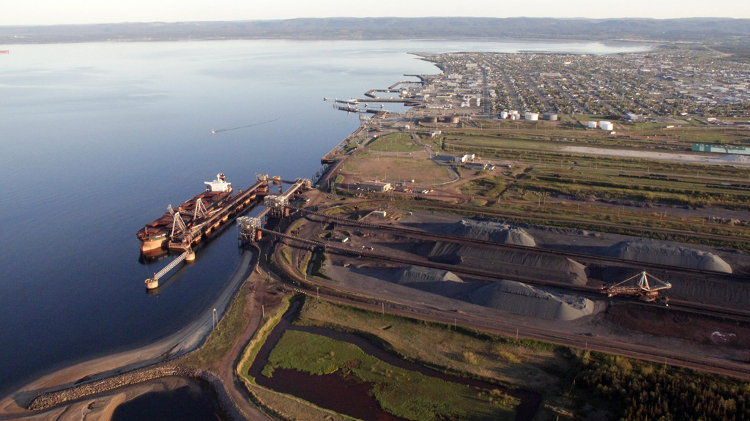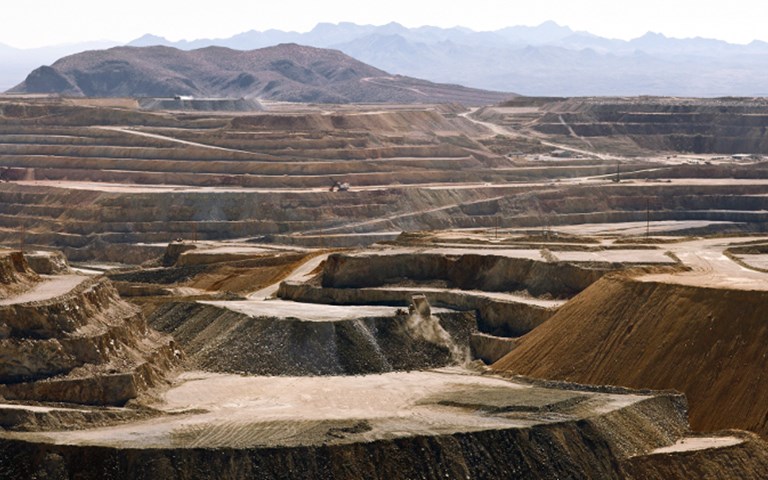Freeport-McMoRan’s Sierrita mine was just one of several sites closed in the past few months as miners felt the effects of the ongoing downturn | Courtesy of Freeport-McMoRan
Several major mining companies have taken drastic action to cope with the ongoing downturn, creating a parade of dividend suspensions, mine closures and production cuts in the news. PotashCorp announced in mid-January it had suspended its Picadilly potash operation, cutting between 420 and 430 jobs. Two weeks earlier, Imperial Metals suspended production at its Huckleberry copper mine and laid off 100 workers, citing declining copper prices. Freeport-McMoRan shut down its Sierrita copper and molybdenum mine in December. Anglo American suspended its dividend and cut 85,000 jobs that same week, due in part to restructuring.
Anglo American has shed about 70 per cent of its workforce over the last three years – including its December cuts – and has begun to sell off assets, promising in December to cut down to a core 20 operations from 55, which spokesperson James Wyatt-Tilby said would ensure the company could stay “resilient through the commodity price cycles.” He added that the decision to cut dividends was “one of a number of actions to further strengthen the balance sheet in the current price environment.”
Anglo and Freeport were two of several companies that cut or suspended dividends in 2015, including Glencore, Vale and Teck. BHP Billiton may follow suit in 2016 if executives follow the directives of Credit Suisse and Goldman Sachs analysts, who have publicly urged the company to do so. (If the dividend is not cut by Feb. 23 when BHP Billiton releases its 2016 dividend determination it will be 28th consecutive year without dividend cuts, which is part of the company’s progressive dividend strategy.)
Base metal prices have sagged in the past year – but in the last few months, rates for copper and zinc joined nickel prices below the average global break-even point, said Patricia Mohr, Scotiabank’s vice-president of economics and a commodity market specialist. Break-even costs cover cash costs plus depreciation, interest, royalties and overhead costs.
Prices are now around the 2002 level, just before the decade-long super cycle sparked by China’s industrial growth drove up prices for commodities. This downturn started about three years ago as the demand for base metals in China began to slow. “China is about 47 per cent of the world metal demand for base metals,” Mohr said. “Think about that for a minute.” Investors’ concerns over Chinese demand have pushed the prices lower, too, Mohr said.
And while prices took a dive during the 2008-2009 U.S. recession, Mohr noted the current weakness in the commodities market is broader, extending to many types of commodities including iron ore and coking coal. “I think that has to do with very lackluster world economic conditions,” she said. “We’re now in the fifth year running of lackluster world economic growth.”
As the downturn has persisted, companies have had to make tough choices – and they may need to make a few more difficult calls in the near future.
“I think the realization has come that this wasn’t a temporary downturn, that it will take some time to pull out of, and that’s where I think we’re seeing a few more major decisions occurring,” said Liam Fitzgerald, PriceWaterhouseCoopers’ national mining leader.
Fitzgerald highlighted Anglo American’s decision to reduce production and sell off assets to prepare itself for a longer downturn. (Barrick has also decided to sell off assets and focus on certain core operations.) “It will be interesting to see if other companies who are diversified producers, whether any of them take similar action – because that was relatively drastic,” he said.
“We’re in a bust at the moment, and what makes it so painful is it comes after a boom,” said SRK mining corporate consultant Neal Rigby. High commodities prices may have initially made lower-grade ore economically feasible and more attractive, but now that higher cost per unit no longer makes sense. “What we’ve been seeing at the moment is some drastic action,” Rigby said. “It’s a little like trying to turn an oil tanker – it’s not easy.”
If there is an upshot, it is that the Canadian dollar’s plummeting value relative to the U.S. dollar may have created more favourable economic conditions for Canadian miners, especially relative to their U.S. compatriots. Both Mohr and Fitzgerald noted that while operating costs may be in Canadian dollars, metals are priced in U.S. dollars. Therefore, Canadian companies are getting a boost from the foreign exchange rate.
Companies have a bit longer to hang on until things pick up, analysts said. Zinc and lithium were highlighted as two good picks for investors in Scotiabank’s December 21 edition of its Commodities Price Index. Supply-demand balances for base metals may start to improve as early as 2017 or 2018, Mohr said.




